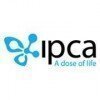Quality Head
40+ Quality Head Interview Questions and Answers
Asked in East Coast Magnets

Q. Can you explain different welding practices in detail?
Different welding practices include MIG, TIG, stick, and flux-cored welding.
MIG (Metal Inert Gas) welding uses a wire electrode and a shielding gas to join metals together.
TIG (Tungsten Inert Gas) welding uses a non-consumable tungsten electrode and a shielding gas to create a strong weld.
Stick welding, also known as Shielded Metal Arc Welding (SMAW), uses a flux-coated electrode to create the weld.
Flux-cored welding uses a tubular wire filled with flux to protect the weld fr...read more
Asked in Karam

Q. How do you resolve wall thickness problems in the die casting process?
Addressing wall thickness issues in die casting involves process optimization and design adjustments.
1. Optimize mold design: Ensure uniform wall thickness to prevent weak spots. For example, redesigning a part to have consistent thickness can improve strength.
2. Adjust injection speed: Increasing the injection speed can help fill the mold more completely, reducing the risk of thin walls.
3. Control cooling rates: Uneven cooling can lead to warping and thickness variations. Im...read more
Asked in OM PRECISION TOOLS

Q. What is the difference between TS16949 and IATF 16949?
IATF 16949 is an updated version of TS16949, incorporating additional requirements and aligning with ISO 9001:2015.
TS16949 is an automotive quality management system standard developed by the International Automotive Task Force (IATF).
IATF 16949 is the latest version of the standard, released in 2016, and it replaces TS16949.
IATF 16949 incorporates additional requirements, such as risk-based thinking, product safety, and counterfeit parts prevention.
IATF 16949 aligns with the...read more
Asked in Murali Krishna Construction Company

Q. Can you explain the meaning of target mean strength?
Target mean strength refers to the desired or expected strength of a particular quality or characteristic.
Target mean strength is a term commonly used in quality control and manufacturing.
It represents the average or target value for a specific quality parameter.
It helps in setting benchmarks and goals for quality improvement.
For example, in concrete testing, the target mean strength may be the desired compressive strength of the concrete mix.
Achieving the target mean strengt...read more

Asked in NTF Group

Q. Can you provide one example of a problem you have solved?
Resolved a recurring quality issue in product testing, enhancing efficiency and reducing defects by implementing a new protocol.
Identified a pattern of defects in the final product during quality checks.
Conducted a root cause analysis to determine the source of the issue.
Developed a new testing protocol that included additional checkpoints.
Trained the quality assurance team on the updated procedures.
Resulted in a 30% reduction in defects over the next quarter.

Asked in IDFC FIRST Bank

Q. Describe a recommendation you made that improved business key performance indicators, and explain how.
Yes, by implementing a continuous improvement program and focusing on customer satisfaction.
Implemented a continuous improvement program to identify and address quality issues
Focused on customer satisfaction by conducting surveys and addressing feedback
Trained employees on quality management principles and techniques
Established clear quality objectives and regularly monitored progress towards achieving them
Quality Head Jobs



Asked in Karam

Q. What are heat cracks in die casting and how can they be resolved?
Heat cracks in die casting are defects caused by thermal stress, leading to fractures in the die or cast part.
Heat cracks occur due to rapid temperature changes during the die casting process.
To resolve, maintain consistent die temperatures to minimize thermal stress.
Using materials with higher thermal conductivity can help dissipate heat more evenly.
Implementing a controlled cooling process can reduce the risk of heat cracks.
Regular maintenance and inspection of dies can pre...read more

Asked in Monte Carlo

Q. face side of fabrics , how can we do pu leather production
To produce PU leather, the face side of fabrics can be coated with a polyurethane layer.
Apply a polyurethane coating to the face side of the fabric to create a leather-like appearance and texture.
Use a bonding agent to ensure the polyurethane adheres well to the fabric.
Emboss the coated fabric with a leather grain pattern for a more authentic look.
Allow the coated fabric to dry and cure properly before further processing.
Quality check the PU leather for any defects or inconsi...read more
Share interview questions and help millions of jobseekers 🌟

Asked in Lorven Flex And Sack India

Q. What strategies can be implemented to ensure product quality?
Implementing strategies like quality control processes, employee training, supplier evaluation, and customer feedback can ensure product quality.
Implement quality control processes to monitor and evaluate product quality at every stage of production.
Provide regular training to employees on quality standards and procedures to ensure consistency.
Evaluate and select reliable suppliers who meet quality standards and requirements.
Collect and analyze customer feedback to identify a...read more
Asked in Karam

Q. How do you check flatness using a CMM or height gauge?
Flatness checking ensures a surface is even and free from deviations using CMM or height gauges.
Use a CMM (Coordinate Measuring Machine) to probe multiple points on the surface and create a 3D model.
For height gauges, place the part on a flat surface and measure the height at various points to check for deviations.
Flatness can be quantified using the 'maximum deviation' method, where the highest and lowest points are measured.
Example: If a part has a specified flatness tolera...read more

Asked in MAHABIR PLASTIC INDUSTRIES

Q. Do you have knowledge of external audits?
Yes, I have knowledge of external audit.
I have experience in preparing for and participating in external audits.
I am familiar with audit standards and procedures.
I have worked with auditors to provide necessary documentation and answer questions.
I have implemented corrective actions based on audit findings.
For example, in my previous role as Quality Manager, I led the team through a successful external audit with no major findings.
Asked in Shiv Forgings

Q. What is the difference between ISO 9001:2015 and IATF 16949:2016?
ISO 9001:2015 is a generic quality management standard applicable to all industries, while IATF 16949:2016 is specific to the automotive industry.
ISO 9001:2015 is a general quality management standard applicable to all industries, focusing on customer satisfaction and continual improvement.
IATF 16949:2016 is a sector-specific standard for the automotive industry, incorporating ISO 9001 requirements along with additional automotive-specific requirements.
IATF 16949:2016 places ...read more

Asked in NTF Group

Q. What customer handling skills do you possess?
I possess strong communication, empathy, and problem-solving skills to effectively handle customer inquiries and concerns.
Active Listening: I ensure I fully understand customer concerns by paraphrasing their issues back to them.
Empathy: I relate to customers' feelings, which helps in building rapport and trust.
Problem-Solving: I approach issues with a solution-oriented mindset, providing timely resolutions.
Clear Communication: I explain processes and solutions in a straightfo...read more

Asked in Bayer

Q. How do you handle product issues during operations?
I address product issues in operations by implementing root cause analysis, corrective actions, and continuous improvement strategies.
Conduct root cause analysis to identify the underlying issues
Implement corrective actions to address the root causes
Develop and implement continuous improvement strategies to prevent future product issues
Collaborate with cross-functional teams to ensure effective resolution
Track and monitor the effectiveness of implemented solutions
Asked in Karam

Q. What is the reaction plane for the control plane?
The reaction plane in control systems defines the orientation of forces during a reaction, crucial for stability and performance.
The reaction plane is essential in understanding how forces interact in a control system.
In robotics, the reaction plane helps determine the stability of a robot during movement.
In aerospace, the reaction plane is used to analyze the forces acting on an aircraft during maneuvers.
In chemical processes, the reaction plane can influence the efficiency ...read more
Asked in VEL-VIN Packaging

Q. How do you control warpage of a board?
To control warpage of board, proper design, material selection, and manufacturing process should be followed.
Use materials with low coefficient of thermal expansion
Ensure uniform cooling during manufacturing
Use thicker copper traces to reduce thermal expansion mismatch
Avoid large copper pours
Use balanced copper distribution
Use proper board thickness
Use proper solder mask thickness
Use proper via placement
Use proper component placement
Use proper board support during assembly
Use...read more
Asked in Vee s vee Industries

Q. Cost of poor quality and continual improvement
The cost of poor quality can be significant, but continual improvement can help reduce it.
Poor quality can result in lost revenue, increased expenses, and damage to reputation.
Continual improvement can help identify and address quality issues before they become costly problems.
Examples of poor quality costs include rework, scrap, warranty claims, and customer complaints.
Examples of continual improvement initiatives include process audits, employee training, and customer feedb...read more
Asked in Shiv Forgings

Q. What is QMS and how do you implement it?
QMS stands for Quality Management System. It is a set of policies, processes, and procedures required for planning and execution in the core business area of an organization.
Identify quality objectives and processes
Develop quality policies and procedures
Implement quality control measures
Monitor and measure quality performance
Continuously improve the quality management system
Asked in Swatirtha Charitable Trust

Q. What is the main challenge in DDUGKY?
The main challenge in Ddugky is to ensure quality training and employment for rural youth.
Providing access to quality training facilities in rural areas
Ensuring employment opportunities for trained youth
Addressing the skill gap between industry requirements and rural youth capabilities
Ensuring sustainability of the program
Ensuring proper monitoring and evaluation of the program

Asked in Rajapushpa Properties

Q. Do you have knowledge of documentation?
Yes, I have knowledge of documentation.
I have experience in creating and maintaining quality documentation such as SOPs, work instructions, and quality manuals.
I am familiar with document control processes and have worked with electronic document management systems.
I understand the importance of accurate and up-to-date documentation in ensuring compliance and improving quality.
I have also conducted document audits to ensure compliance with regulatory requirements.
Examples of ...read more
Asked in VEL-VIN Packaging

Q. What is the procedure for making gum for boardine?
The processor of making gum for boardine involves mixing and heating ingredients to form a sticky mass.
Ingredients such as gum base, sweeteners, and flavorings are mixed together.
The mixture is then heated to a high temperature to melt the gum base.
Once melted, the mixture is cooled and shaped into the desired form.
Quality control measures are taken to ensure the gum meets safety and taste standards.

Asked in India Nippon Electricals

Q. Tell me about the most challenging problem you have solved.
Developed a new quality control process that reduced defects by 50%
Identified root causes of defects through data analysis
Collaborated with production team to implement new process
Trained employees on new process and provided ongoing support
Monitored results and made adjustments as needed

Asked in Maini Precision Products

Q. explain 5 s 7q c tools and tfm tva ppap
5S, 7QC tools, TFM, TVA, PPAP are quality management tools used in various industries.
5S - Sort, Set in order, Shine, Standardize, Sustain for workplace organization
7QC tools - Check sheets, Pareto charts, Cause-and-effect diagrams, Histograms, Scatter diagrams, Control charts, Flowcharts for quality control
TFM - Total Flow Management for optimizing flow of materials, information, and resources
TVA - Time Value Analysis for evaluating the value of time in processes
PPAP - Produ...read more

Asked in Dineshchandra R. Agrawal Infracon

Q. Can you take care of HSE as well?
Yes, I can manage HSE alongside quality, ensuring compliance and safety in all operations.
Experience in implementing HSE policies in previous roles, leading to a 20% reduction in workplace incidents.
Conduct regular safety audits and risk assessments to identify and mitigate hazards.
Develop training programs for staff on HSE best practices, enhancing awareness and compliance.
Collaborate with cross-functional teams to integrate HSE considerations into quality management systems...read more
Asked in Althera Pharmaceutical

Q. Compare online and offline TOC.
Online TOC is real-time, accessible from anywhere, while offline TOC requires physical presence and manual data entry.
Online TOC provides real-time data analysis and accessibility from anywhere with internet connection.
Offline TOC requires physical presence at the testing site and manual data entry, leading to potential delays and errors.
Online TOC systems can automatically generate reports and alerts for out-of-spec results.
Offline TOC may have limitations in terms of data s...read more
Asked in Althera Pharmaceutical

Q. Requirement of water validation
Water validation is essential to ensure it meets quality standards and is safe for consumption.
Water validation involves testing for various parameters such as pH, turbidity, chlorine levels, and microbial contamination.
Validation ensures compliance with regulatory standards such as EPA guidelines for drinking water quality.
Regular validation helps identify potential issues early and prevent health risks to consumers.
Examples of water validation tests include chemical analysi...read more

Asked in Apitoria Pharma

Q. How can quality be improved?
Improving quality involves systematic processes, employee engagement, and continuous monitoring to enhance products and services.
Implement a robust quality management system (QMS) to standardize processes.
Conduct regular training sessions for employees to enhance skills and awareness.
Utilize customer feedback to identify areas for improvement, such as surveys or focus groups.
Adopt data-driven decision-making by analyzing performance metrics and quality indicators.
Encourage a ...read more
Asked in Jaideep Ispat & Alloys

Q. How do you develop your products?
Our products are developed through a rigorous process involving research, testing, and collaboration with various stakeholders.
Conduct thorough research to identify market needs and trends
Collaborate with cross-functional teams including R&D, marketing, and production
Iterate on prototypes based on feedback from focus groups and beta testing
Ensure compliance with industry regulations and standards
Continuously improve products based on customer feedback and market demands

Asked in Reliance Industries

Q. What is SOP?
SOP stands for Standard Operating Procedure, which is a documented procedure that outlines the steps to be followed in a specific process.
SOPs are used to ensure consistency and quality in processes.
They are often used in industries such as manufacturing, healthcare, and food service.
Examples of SOPs include procedures for cleaning equipment, handling hazardous materials, and conducting audits.
SOPs should be regularly reviewed and updated to reflect changes in processes or re...read more
Asked in VEL-VIN Packaging

Q. How do you create a CAPA?
CAPA stands for Corrective and Preventive Action. It is a process to identify, investigate, and resolve quality issues.
Identify the problem and its root cause
Develop a plan to correct the problem
Implement the plan
Verify the effectiveness of the plan
Prevent the problem from recurring
Interview Questions of Similar Designations
Interview Experiences of Popular Companies






Calculate your in-hand salary
Confused about how your in-hand salary is calculated? Enter your annual salary (CTC) and get your in-hand salary


Reviews
Interviews
Salaries
Users










